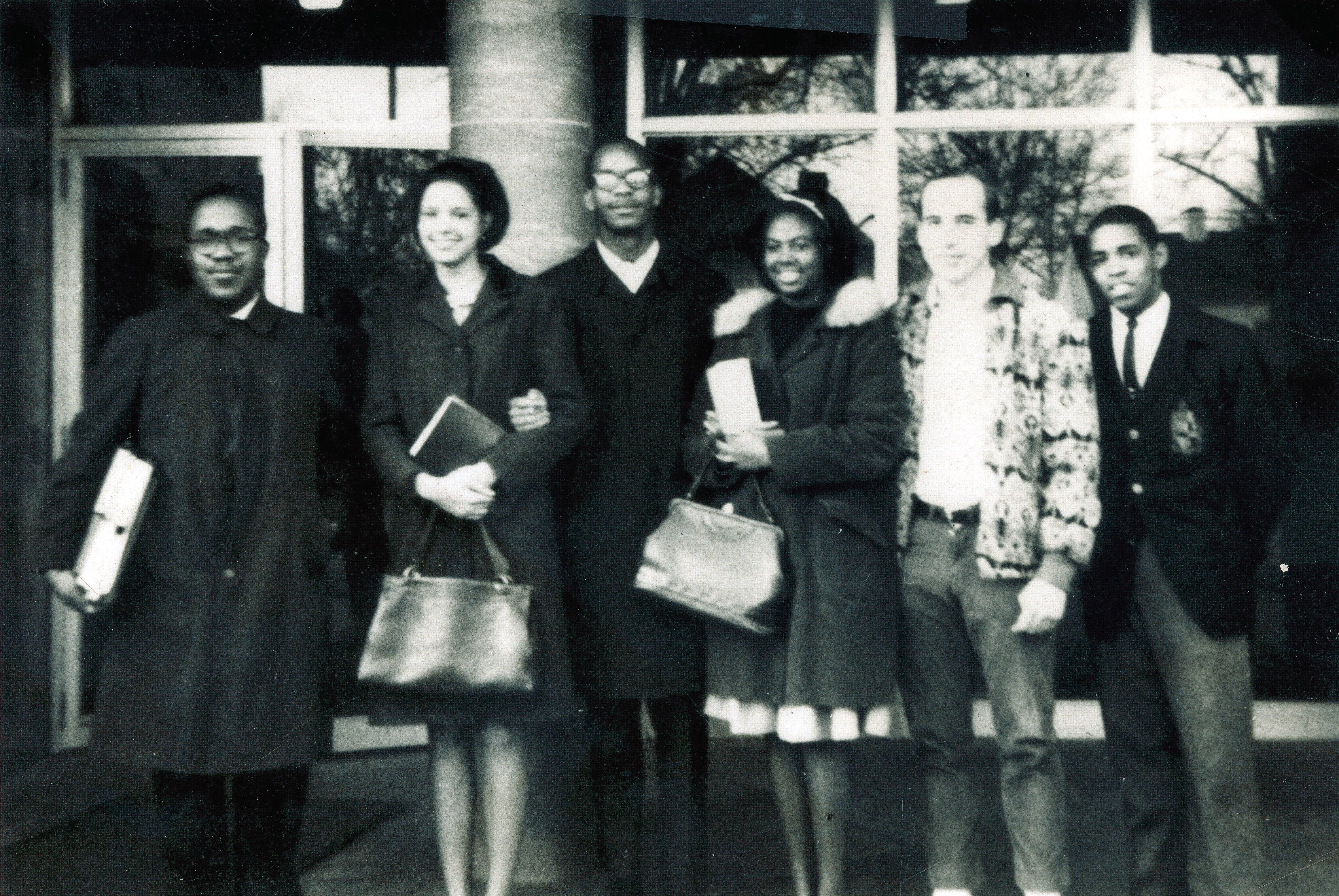
Ask the experts
Cornellians find success in nearly every field imaginable. They throw themselves into hobbies, become leaders in their disciplines, and they are willing to share the secrets to their success. We asked some of our many outstanding alumni to tell us how to succeed in various endeavors, answering questions as perennial as how to balance work and family, to the more philosophical question of how to follow your dreams. So how do you find success as an entrepreneur, develop a brand, or get the most out of your visit to an art museum? Let our alumni experts tell you.
How do you balance work and family life?
When I think about work/life balance, I would first tell you that it is personal—different for each individual. I would tell you how important it is to find work that you love and that aligns with your values. When I interviewed with Shell, a human resources manager gave me the following advice: “Think hard about this choice of where to work. Make sure you find meaning in it, that you enjoy it, that you really like your colleagues because you will spend more of your waking hours with them than anyone else.” He was right.
I would also say it is important to work hard, to do what is needed and more than what is asked, to do jobs that no one else wants, to invest in building good personal and professional relationships, and to demonstrate genuine care for others. Your colleagues will respect you, and your commitment will be returned to you when you need it—when you need time away, a bit of a break to deal with a personal issue, to be at an important family event, or help with a challenging project. What comes around goes around.
Last, I would say make sure you have a support network. My husband Andrew Buchmeyer ’86, daughter Abby, and son Jackson have been with me through this journey. They make it worthwhile.
Gretchen Liebenow Buchmeyer ’88 is the vice president for talent and development for Shell’s Upstream Americas business. She has more than 20 years of human resources experience across Shell’s global businesses.
How can you make a difference in your community?
In my view, to make a difference in your community, you ask yourself two questions: “What do I like about being here?” and “What could I, along with others, do to make this an even better place?”
Over the years my roles (be they professional or personal) provided me with a wealth of experiences. I was never afraid to try new roads that opened before me. Down the line, those various roads gave me a confidence to understand that I could add value to the city in the role of mayor. Also along the way came a key realization: a Cornell education brought an ability to lead, to analyze what needed doing, and to figure out how to accomplish the goal(s). After that, you simply do what needs to be done—one step at a time. Every one of us has been given that gift. You only need to use it.
All communities need volunteers at Meals On Wheels, Park Board, or the library, to name a few. My advice is to know your community, be it large or small, then look around to see where you can make an impact. But, most of all, take the first step—don’t be afraid. It’s really quite easy!
Nancy Kleihauer Adams ’64 has been an educator, community volunteer, and for the past six years has served as mayor of Pequot Lakes, Minn.
How do you plan for retirement?
Over the years, my philosophy with clients has evolved. Originally, I felt my role was to achieve the highest possible return, but over the years I have come to realize the most important thing for clients is to be comfortable with the investment strategy they’re taking. There are enough things in the world today to worry about, and their investments should not be one of them.
One thing people should realize is the value of money over time due to compounding. When planning for retirement, you need to commit to the long term. Manage the money prudently and realize the growth doesn’t happen overnight. Money management isn’t about instant gratification—you’re looking at a decade, or two, or three even. The future value of your portfolio can be life-changing if you have the discipline to save and invest properly.
Whether you’re interested in planning for your own retirement or becoming an investment advisor, one of the first steps is to find someone who’s been successful and ask questions about what they have found to be important in their success. People are willing to help others, and I have learned the importance of applying others’ knowledge and experiences, which can lessen the learning curve and, ideally, shorten the path to success. That’s good advice not just for investments, but for all walks of life.
Pete Alepra ’86 is a senior vice president and financial advisor at RBC Wealth Management, where he has spent 25 years working with clients to understand what they want out of their retirement and preparing them to achieve what’s important to them.
What does the money want to know to fund my startup?
New entrepreneurs usually have an overabundance of energy and passion about their ideas that matches their lack of experience in the business of business. The only challenge between you and your first million billion is the startup capital required to get the company off the ground.
I, along with partners, see many prospective business plans every year. I want to know, in order of importance:
Who are you? People are more important than ideas, so I want to know who you are, what you believe in, and what drives you. Marginal ideas have a much better chance of succeeding with good people than great ideas have of succeeding with marginal people.
What is your idea? As concisely as possible and as simply as you can, explain what you are selling and what the consumer is buying. If you think it is the same thing, think again.
Why would someone buy your product? I believe buyers are either increasing pleasure or removing pain when they make a buying decision. Equate pleasure with revenue and pain with expense. Does what you have to offer increase revenue or reduce expense?
How are you going to make money? And how are you going to get sales? I expect to see a basic business model that explains: For every $1 in sales, I will spend 25 cents acquiring a customer, 30 cents servicing the customer, 15 cents in overhead, and keep 30 cents for the company. I believe most businesses fail because they cannot generate sales.
When will you need capital and when will the business be able to return the capital invested? Every business needs a plan. And the plan tells you more about the planner than the business.
Starting a business is more work and more rewarding than any other occupation. It requires a strong belief in yourself. A few provide enough value to the buyers to make their billion. I wish you luck.
Jeff Jensen ’81 is the managing partner of JFO Group, a diversified investment company located in Irving, Texas, that invests in public and private equity as well as real estate. He has invested in more than 50 startup and young companies over 25 years, and currently has 17 portfolio companies, including three startup companies personally funded in the last 24 months.
How do you take a good candid photograph?
Once you find a “candid” moment, the trick is to avoid being seen. Keeping back from the scene with a longer lens might allow me to grab a photo of the flower girls twirling. But, let’s be honest, there are some times when I just have to ask them to twirl instead. If you aren’t given the moment from afar, give your subject a scenario and let them do their thing. It will help them feel natural and keep your capture candid.
People might be surprised by how much education goes into being a professional photographer and managing a business. Most photo studios fail within the first three years, so understanding this balance between the creative and management is key. I found that college internships and continuing my education every year since has been crucial. It’s way more than just picking up a camera and setting it to “auto.” Understanding basic principles of photography is a good start. There are incredible workshops available to new photographers that did not exist a few years ago too. And if you are able to intern with a studio before venturing on your own, I’d highly recommend it. For the last two years I’ve had the pleasure of hosting Cornell College students as interns, and it’s always so great to watch them grow in so many directions.
Perhaps that’s just the Cornell way—to take an opportunity and balance both sides of the brain in such a powerful way.
Robyn Schwab Aaron ’07 is the owner and lead photographer of Robyn Photography, a boutique studio in eastern Iowa focusing exclusively on wedding photography. She mostly works with couples from Des Moines, Iowa, to Chicago, but has loved the opportunity to travel nationally and internationally for weddings, as well—especially when it’s been for a fellow Cornellian!
How do you approach an art exhibit?
Here are some of the more general ideas and tips I share with my students: Try to look at the object first, before reading the label. Treat art like a mystery game. Scrutinize the work and then try to predict what the label will say about who made it and when, and which materials were used; then read the label to confirm your impressions and make a mental note of what did not occur to you.
Be sure, and this is important, to look at the material characteristics that are not available through the photographs online or in books; pay attention to the size, texture, and physical presence of the work. I ask my students to imagine the artist’s process in the creation of the piece. In a painting for instance, which brush strokes and colors were applied first or last? These physical attributes will be there for you to scrutinize for that brief time during which you are in the presence of the art. Later, in the glow of your computer screen, you can consider the iconographic features (imagery) that are usually available in photographic reproductions, whereas many of the material characteristics are not. Look for beauty. Look for craftsmanship. Probably, an individual made this thing with his or her own two hands. It is the only one in the world. It is unique, it is special. Pay close attention.
I try to factor in my likelihood of returning to the same museum as a way to help me determine an appropriate pace. So when I go to the Art Institute of Chicago, I adopt a very leisurely pace and look very closely at only a few of the thousands of pieces because I know that I will return. But, when I am in a faraway place, like Budapest, I try to see everything. I train my students to notice on the label whether the particular piece is owned by the art institution or whether it is on temporary loan. If it is from some faraway place, cherish the encounter even more.
Here is one little trick I have used when I am pressed for time on a visit to a major museum: Duck into the gift shop first! Not to make purchases, but to flip through the rack of postcards, refrigerator magnets, or guidebooks to see which pieces the museum itself is promoting. Use this to make a short list of must-see pieces. The museum guards will probably be well aware of the location of these most prized pieces, so you can just go directly from one to the other with guards along the way providing you with efficient routes.
Do not be afraid to skip some pieces, linger on others, or backtrack and revisit pieces that you missed or already saw. Ask yourself, what do I find to be unusual about this artist’s work? What can I compare it to? Do I like it? Would I want to have it in my house? Would it even fit through my door? Why would anyone want to make such a thing? What do I think the artist is trying to share with me? How do the pieces function as a unity? Do some stand out as exceptional and do others seem not to fit? What is the art providing to me—or not providing—that I expect, or desire from art? These are questions that will help you develop and perhaps internally articulate reasons for your initial reactions. Don’t worry. It is perfectly fine to be judgmental about art, especially if you can identify the criteria behind your preferences.
Museums are often architecturally significant themselves, so pay attention to the shape of the rooms, the layout of the galleries, the lighting, the flooring material, the space between pieces, the pedestals, the font on the labels! Looking at art is difficult sometimes and often physically tiring, so stop and rest. Sit down. Have lunch, or take a coffee break. Many museums have courtyards or balconies, so enjoy a view. Think about where you are. Thank yourself for spending time with art.
Tony Plaut ’78 is professor of art at Cornell College, where he teaches painting, drawing, collage, and senior seminar. He holds an M.F.A. from the University of Chicago and has exhibited widely throughout the Midwest, with major shows occurring in Chicago and Des Moines, Iowa.
How can you follow your dreams and achieve your goals?
Look at every day as the first day of your career. Today is where you start, not where you finish. Your career, passion, personal satisfaction, and confidence are built through time and experience, and rarely all at once.
Early in my career, attributes most valued by my own leaders were:
- Flexibility
- Capacity
- Relationships
- Integrity
As my career progressed and I became more self-aware, my style focused on:
- Influence
- Commitment
- Courage
- Strategy
In the past 10 years, establishing a stronger leadership presence became increasingly important through:
- Inspiration
- Role modeling
- Development
- Vision
Although different for all of us, satisfaction in my role was found through learning, growing, adding value, conviction, and having fun. It’s important to enjoy what we’re doing. Not every day, but the majority of the time. Making a conscious choice to enjoy our work allows for greatness!
Risk-taking in every stage and being open to taking chances in our decisions, opinions, and directions opens us up to new and exciting results. Some of my best learning and most valued experiences have evolved through taking a chance on something. What we learn helps define what is most valued by and important to us.
The value of relationships isn’t a difficult concept, but can’t be said enough. Negative relationships will limit your growth down the road. In my own journey I’ve crossed paths multiple times with the same people, even in different companies. If my relationship wasn’t in a good place with one of them, it could have altered my success quickly and dramatically.
Chip Koch ’88 is the general manager of entertainment operations for Disney California Adventure in Anaheim, Calif., with 28 years of live theme park entertainment experience.
How can you be a successful entrepreneur?
To start, you must be driven, a hard worker, enjoy working with people, appreciate and value teamwork, be good at what you do, and recognize you have a passion to start or do something on your own. You invent a clever technology, create a new service or develop an innovative approach or a “must-have” product.
From day one, make certain there is something that differentiates you from others: you must know your market and that your offering is something that clients/customers want today and will continue to need tomorrow. Study others’ success and seek help from trusted people to develop a formal business plan. Firmly grasp your financial requirements, respect your cash resources, and apply proven Business 101 practices from inception. Implement a plan to best penetrate your target market, and then execute and focus and keep executing and focusing.
Never stop learning, and never stop listening to your clients and your staff. Understand your competition and don’t be afraid to copy an aspect that works for them, but avoid an entrepreneur’s inherent curiosity “to chase the next best shiny object.” A founder’s passion is a must, but blind passion is debilitating; keep looking in the mirror and find healthy reality.
In this remarkable global marketplace of innovative technology, gee-whiz products, and the market leveraging of social media, the foundation of success is that it’s still “all about people.” To grow and be a sustainable success, you must surround yourself with good, enthusiastic, and committed people. They are and will always be your company’s greatest asset; listen to them, encourage them to work in a team environment, but also help them realize their full individual potential. Make certain you fairly incentivize them, openly recognize their contributions, and reward them with ownership or profit-sharing opportunities.
Most importantly, know yourself; truly understand and optimize your strengths, and seek people you trust to augment your weaknesses.
Dr. Gary L. Knutsen ’69 is a prolific entrepreneur and serial angel investor whose business curiosity has resulted in the founding of eight companies and the support of many others. He is a veterinarian with a graduate degree in physiology and advanced specialization in toxicologic pathology. He founded what ultimately became the world’s largest contract toxicologic pathology company.
How do you develop a successful brand?
One of the biggest misconceptions about branding is ultimately where the ownership of a brand resides. Too often the focus is disproportionately on defining and controlling a brand primarily through its outward identifiers such as logo, typography, color palette, and messaging. But this is an incomplete understanding of brand, and dismisses the degree to which social media has changed the concept of control when it comes to authorship.
The truth is, a brand is not what its author or manager says it is. A brand is what its audience says it is. It is the entire collection of thoughts, feelings, and beliefs an audience has about an entity—whether a company, product, service, or a person. And it is developed over a continuum of experiences that inform that perception. Therefore, every touch point matters equally, from the logo, to the design of the company lobby, to the way an employee greets a guest. They are all opportunities to reinforce what that brand represents in the mind of its audience.
Therefore, the most important step regarding building a brand is to define a clear single idea about its essence. That becomes its North Star and guides all decisions related to communicating that brand effectively. Choices either fit that paradigm or not. After definition, consistency of expression becomes crucial to fulfilling that promise in the mind of its audience.
So make decisions regarding brand with intent. When aligned in support of that clear single idea, a sometimes under-appreciated asset can become an incredibly valuable one: a loyal audience that understands and trusts what that brand stands for and is willing to advocate on its behalf.
Matt Miller ’94 is vice president and director of experiential design at Periscope. He has 15 years of experience working in marketing and branding for clients such as DreamWorks, Target, Columbia Sportswear, and UnitedHealthcare, among others.
How can you develop a successful exercise program?
The literature, reported by the American College of Sports Medicine, cites five primary components of health-related physical fitness: cardiorespiratory fitness, body composition, muscular strength, muscular endurance, and flexibility. Assessing an individual’s abilities in each of these five categories helps clinicians choose appropriate intervention strategies for an exercise prescription. Results from a fitness assessment are interpreted along with a client’s personal goals related to health and wellness and within realistic measurements of a client’s barriers to exercise (such as time or equipment).
Health improvements in chronic disease risk factors can be realized with as little as 150–200 minutes of exercise per week. That’s less than 30 minutes of exercise a day! The type of exercise isn’t as important as just being physically active—doing something is better than nothing!
There continues to be an increasing awareness of the importance of regular physical activity in our society. Now, more than ever, there is a need for expertise in those trained and knowledgeable in how to prescribe physical activity and exercise, and how to subsequently measure the effects of these programs. Kinesiology is a rewarding field of study that will allow you to have a direct impact on the health and well-being of our society.
Kristin Meyer ’01 is an assistant professor of kinesiology at Cornell College. In addition to teaching, she has more than 10 years of experience working as a physical therapist and athletic trainer, including holding a clinical specialist certification in sports physical therapy.
How can you write your family history?
Family history is more than names, places, and dates. Describe ancestors in their historical, cultural, and economic milieu to understand and best chronicle their lives. Find the stories that will enliven your ancestral book. Go where your ancestors lived. Tramp musty courthouses. Visit town libraries. Seek local sources. Travel, study, interview. Explore the Internet, but do not accept anyone else’s work unless they adequately support it with source references that you can verify.
Research must be a continual process. Discover ancestral generations and how and where they lived, as you link them to known forbearers. Research progress is like finding and fitting jigsaw puzzle pieces, but more satisfying. Seeking and finding forgotten generations will be as rewarding for you as the results will be for the readers of your narrative.
Do not fret if your forebearers were ordinary people. Their challenges and solutions, failures and successes will fascinate you, as you reflect that they are the root while you are the branch. They survived so you could unearth them and relate their life story. Introduce them in your account as the flesh and blood persons they were. Expect surprises, disappointments, and brick walls as part of the search.
Busy young people should not wait to interview and record memories and tales of older relatives. Do so before they leave. Failing to do this will be your biggest regret. You can always write your family history later.
Gilbert Drendel ’58 was Cornell student body president and a member of Phi Beta Kappa. He graduated summa cum laude, attended Harvard Law School, and practiced law in suburban Chicago. He is a former chairman of the Cornell Board of Trustees now serving his 20th year on the board. Drendel is writing his seventh family history book.






